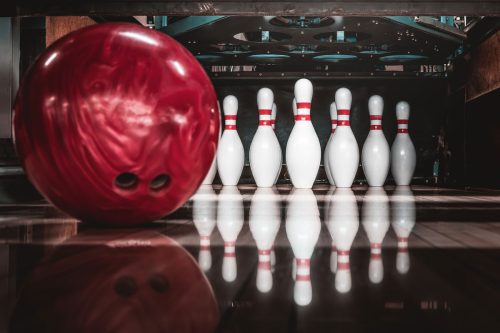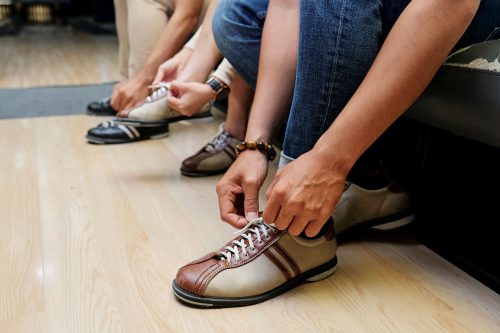You are planning on buying a basketball hoop and want to make sure you have the correct size backboard. There are different sizes of backboards on the market, so you want to make sure you have the best one for your space. You also want to be sure that your shooting practice will transfer to the basketball court that will have regulation-size backboards. We did the research to find out just what size that should be.
Regulation backboards are six feet wide (72 inches) by three and a half feet (42 inches) tall. The red rectangle on the backboard is two feet (24 inches) wide and one and a half feet (18 inches) tall. Backboard sizes can be as small as 44 inches wide, which are recommended only for young players. 54-inch and 60-inch wide backboards are also available.
Now that you know there are many sizes of backboards on the market, you probably wonder if it is okay to get a smaller backboard. You might wonder which size is best for your space while also considering the ages of the people using the basketball hoop. There are other things to consider, including the material and thickness of the backboard. This post will be a comprehensive breakdown of all the details you need to consider before purchasing.

How Big Is A Basketball Backboard?
Basketball backboards can range in size from 44 inches up to 72 inches wide. This is the key measurement to consider when determining what size you need. A regulation basketball court uses backboards that are 72 inches wide.
The advantage of using a regulation-size backboard is that you can practice various shots off the backboard that won't work with a smaller backboard.

What Size Backboard Do High Schools Use?
Any high school, middle school, college, or professional court will use a regulation-size hoop and backboard. That is 72 inches wide and 42 inches tall. The hoop is also 10 feet high for all regulation basketball courts. The rectangle just above the hoop is 24 inches wide and 18 inches tall.
How Thick Should A Basketball Backboard Be?
Regulation backboards are 1/2 inch thick. The only other common backboard thickness is 3/8 of an inch. When choosing the backboard material and thickness, you want the option that provides a similar reaction as regulation backboards. 1/2 inch thick backboards will provide more bounce and reaction than 3/8 inch, which will allow you to practice rebounding more effectively.
What Size Backboard Is Best?
The best size backboard is 72 inches wide, 42 inches tall, and a half-inch thick. This is the regulation size backboard that will be found in all gyms, including middle schools and high schools. This is the best size board for a personal basketball hoop because the ball will respond in the same way it will when playing a regulation game.
If you have a limited amount of space to put your basketball hoop, then you may opt for a 54-inch or 60-inch backboard.
When it comes to backboard size, a larger board close to regulation size is always best. Regulation size backboards can cost up to $1,300 or more just for the backboard and rim. 44 and 54-inch backboards cost $250 to $500.
Regulation backboards weigh more and need a stronger pole system, bringing the total cost to well over $2,000. Decide your goals and budget for your basketball court to determine which option is best suited for you.
How Can A Backboard Be Mounted?
A home basketball hoop and backboard can be installed in three different ways. If you are looking for something more permanent and have a good size area for a court, you may decide to use concrete. If you want a movable hoop, you can use a portable option that is weighted down with sand.
A basketball hoop and backboard can also be mounted to a wall or garage. Installing the hoop on the garage is the best space-saving option.
Click here to buy Silverback NXT 54-Inch Wall Mounted Backboard And Rim from Amazon.
How Do You Measure A Backboard?
When you are looking for a backboard to purchase, the width dimension is usually the number that is listed. The most common sizes are 44, 48, 54, 60, and 72 inches. To measure this dimension of the backboard, you would run the measuring tape horizontally from the left side of the backboard to the right.
The height of the backboard does not need to measure, because this will be adjusted in size accordingly based on the width of the rectangular backboard.
What Size Backboard Do I Need For A Driveway?
A driveway is an excellent place to put a basketball hoop since it is probably paved. A regulation-size backboard will overhang more of the driveway and cut into the available playing area. If you have a 2-car driveway or larger, you have enough space for a 60 or 72-inch regulation-size backboard. If you only have a one-car driveway, it is better to use a 54-inch backboard or smaller.

What Size Backboard Should Small Children Use?
Small children can use a backboard that is half-size, such as 33-inches or 36-inches. You can get a pole that will adjust from three to five feet, which is a good height for young children to get acquainted with the game. A backboard this small is not necessary for young children, but they will do better with a pole that can be adjusted to a shorter height.
You may decide to choose a larger size backboard so you can continue to use the same backboard when your children get taller and older.
Silverback Junior 33-Inch Basketball Hoop For Kids
Click here to buy this backboard on Amazon.
What's Better, Polycarbonate Or Acrylic Backboard?
Polycarbonate is considered stronger and longer-lasting for indoor basketball courts. The problem with using this kind of backboard outdoors is the UV rays will cause the backboard to become more brittle over time. The glass starts to look faded and turn yellowish in color. For this reason, acrylic backboards are better for longevity when exposed to the sun.
The downside to acrylic backboards is they don't have the same bounce or reaction as regulation backboards that are made of tempered glass. When you are practicing rebounding, you will get a better bounce from the polycarbonate backboard.
Acrylic is much lighter than polycarbonate, which is why it doesn't react the same way. The decision depends on how serious you are about basketball and whether or not you would consider replacing the backboard after three to five years.
What Kind Of Backboard Is Used For Regulation?
The regulation backboards in the NBA, colleges, and high schools are made of tempered glass. This kind of backboard is not as widely available on the market. They are more prone to being damaged or shattered by vandalism, accidents, or weather. This would be the best choice for indoor courts.
Should I Build A Court In My Backyard?
You will enjoy having a court in your backyard to play basketball, but the cost and space requirements can be inhibitive. Most backyards would only potentially have the space for a half-court. This would provide enough space to have a three-point line and boundaries. You may spend as little as $11,000 for a half-court in your backyard, but the cost can also be up to seven times greater for a full-size court depending on material and labor costs in your area.
For more information on building your own backyard court, check out this article. How Much Does It Cost To Put A Basketball Court In A Backyard?
Since the cost can range from $4 to $16 per square foot, you may decide that adding in a section of concrete with your basketball hoop is worth the money. You don't necessarily need to put in a half-court with a three-point line to enjoy shooting hoops in your backyard. You can also save money with a do-it-yourself project by mixing and pouring the concrete.
For more information about making your own concrete basketball court, check out this post. How To Build A Concrete Basketball Court? [5 Steps]
In Closing
A basketball backboard can vary in size from 44 inches wide all the way up to the regulation size of 72 inches, or six feet wide. This is the horizontal measurement of the board. A regulation NBA, college, or high school backboard will measure 42 inches tall and 72 inches wide.
Smaller backboards are good to use for smaller spaces, but a regulation-size backboard is always preferred if you have at least a 2-car driveway or a large enough space for the court.







![Read more about the article How To Clean A Bowling Ball At Home [Inc. With Dish Soap]](https://fitseer.com/wp-content/uploads/2022/04/pair-of-hands-holding-a-bowling-ball-and-polishing-pad-500x333.jpg)
